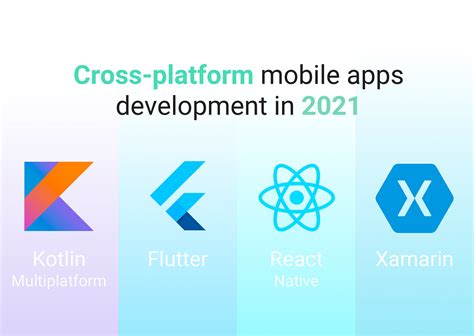In the ever-evolving landscape of cross-platform development, the debate between Kotlin Multiplatform (KMP) and Flutter has reached a fever pitch. Developers and companies alike are weighing the pros and cons of each technology to determine which will best meet their needs. While Flutter has made significant strides and captured a substantial portion of the developer community, Kotlin Multiplatform is gaining traction by offering the ability to share code across platforms while leveraging native UI components. But is Kotlin Multiplatform poised to dethrone Flutter? Let’s delve deeper into this question.
One of the primary advantages of Kotlin Multiplatform is its seamless integration with existing native platforms. As one user noted, KMP allows for the reusability of business logic across Android, iOS, and other platforms using Kotlin, while still enabling developers to use platform-specific UI frameworks like SwiftUI and Jetpack Compose. This ability to leverage existing native components means that Kotlin Multiplatform can offer a familiar and performant experience that feels ‘at home’ on each respective platform. This is in contrast to Flutter, which uses its own rendering engine and requires developers to learn Dart, a language that is not widely used outside of the Flutter ecosystem.
Additionally, Kotlin’s interoperability with Java provides another layer of flexibility. Many enterprises have already invested heavily in Java and Kotlin-based architectures, especially on the Android side. Shifting to Kotlin Multiplatform allows these companies to expand their codebase to other platforms without a complete overhaul of their current systems. As a commenter pointed out, Kotlin’s vast ecosystem and its JVM heritage make it a formidable choice for cross-platform development. Moreover, the recently introduced Compose Multiplatform aims to simplify UI development by bringing Jetpack Compose to web, iOS, and even desktop applications. This approach can be particularly appealing for larger teams that have dedicated resources for each platform.
However, it is worth noting that Flutter is not without its own substantial advantages. Flutter offers a single codebase for creating visually appealing and highly customizable UIs, which can be particularly beneficial for smaller teams where development resources are limited. Developers have found Flutter’s declarative UI framework to be intuitive and rewarding to work with, enabling rapid prototyping and quick iterations. Moreover, Flutter’s support for various platforms—including web, mobile, and desktop—means that it can serve as a one-size-fits-all solution for many projects. Yet, despite its benefits, some developers have highlighted performance issues, particularly on older hardware, and concerns about Flutter’s reliance on Dart.
The choice between Kotlin Multiplatform and Flutter also depends heavily on future-proofing and sustainability. Google’s track record of sunsetting products that don’t meet their strategic goals has led some developers to be cautious about investing heavily in Flutter. As one user pointed out, many developers have been burned by adopting technologies that were later abandoned, leading to unsupported legacy systems. Kotlin Multiplatform, powered by JetBrains and its robust ecosystem, arguably presents a more stable proposition for long-term projects. Furthermore, the fact that Google is itself utilizing KMP for some of its major applications, such as a rewrite of Google Docs for shared business logic, hints at a broader institutional commitment to the technology.
Finally, the market’s adoption and the community’s enthusiasm will play significant roles in determining whether Kotlin Multiplatform can eclipse Flutter. Recent trends have shown a steady increase in interest towards Flutter, but Kotlin’s popularity in the mobile development space cannot be understated. Surveys and polls will continue to reflect a varied landscape of preferences. While some developers highlight Flutter’s ease of use and comprehensive feature set, others are drawn to Kotlin’s versatility and deep integration capabilities. For now, it seems that companies and developers have their pick of two powerful tools for cross-platform development, each tailored to different needs and preferences. As both ecosystems evolve, their competitive dynamics will undoubtedly shape the future of mobile development.


Leave a Reply